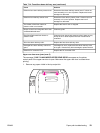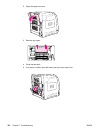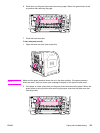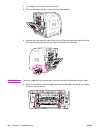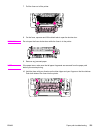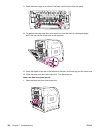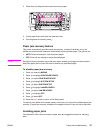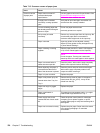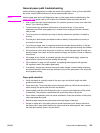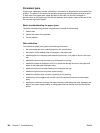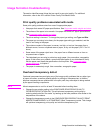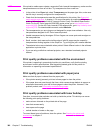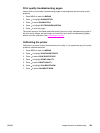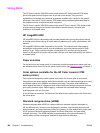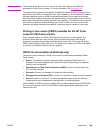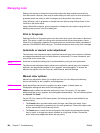
General paper path troubleshooting
Use the following suggestions to isolate the cause of the problem. Once you have identified
the cause, use the tables that follow to find a recommended solution.
NOTE
Use the paper path test in the Diagnostics menu to print pages while troubleshooting. See
Paper Path Test section later in this chapter for information about the paper path test.
● View or print the event log and determine if a particular jam error occurs more often than
others. Try to identify a pattern.
● From the event log, determine the frequency of a particular jam. If a jam occurs
repeatedly around the same page count, consider this a single jam that the customer
tried to clear.
● Try printing from all available input trays to identify whether the problem is isolated to
one tray.
● Print the job in both simplex and duplex modes to identify if the problem occurs only in
one mode or the other.
● Try printing on paper from an unopened ream that has been stored correctly. If the jam
does not occur with this media, then the customer’s media might be causing the problem.
● If the jam occurs from when the printer is turned on, check the paper path for small torn
pieces of paper. Also check for broken sensors or flags, and check for loose or defective
connections.
● If the paper is torn, folded, or wrinkled (typically along the leading edge), inspect the
paper path for items that could be causing the damage.
● If the customer is using non-HP supplies, try replacing those supplies with genuine
HP supplies to see if the problem goes away.
● If necessary, instruct the customer on proper media storage, correct loading technique,
and printer operation. Make sure the customer knows not to grab paper in the output bin
during duplex printing.
Paper path checklist
● Verify that media is correctly loaded in the input trays and that all length and width
guides are set correctly.
● Clean the printer. Toner and paper dust in the paper path can inhibit free movement of
media through the printer and can block the sensors.
● Use the paper path test in the Diagnostic menu to vary the input selections of the printer
to determine if the problem is associated with a particular area of the printer.
● Worn rollers or separation pads can cause multifeeds. Check the condition of the pickup
rollers and separation pads.
● Defective paper sensors along the paper path might signal a false jam.
● Scraps of media left in the paper path can cause intermittent jams. Always check that
the paper path is clear when cleaning the printer and when clearing jams. Also, remove
the fuser and carefully check it for jam debris.
ENWW Paper path troubleshooting 379



